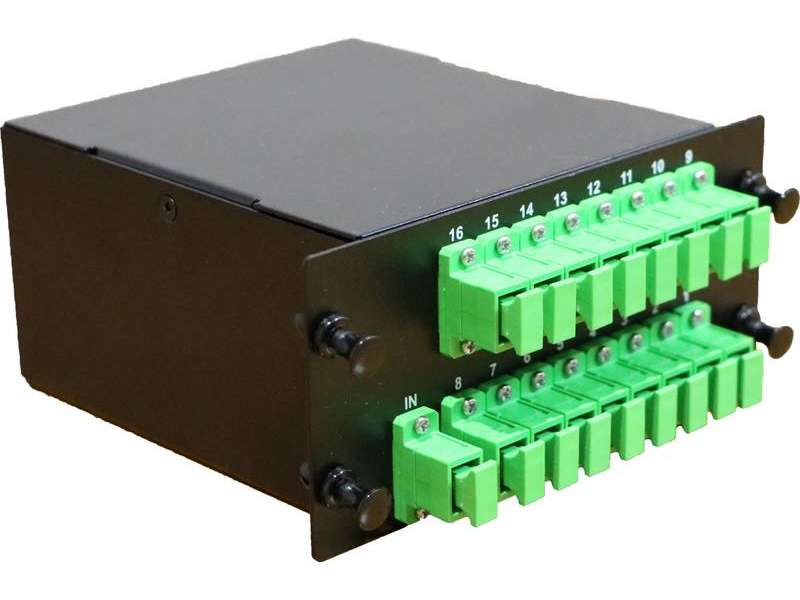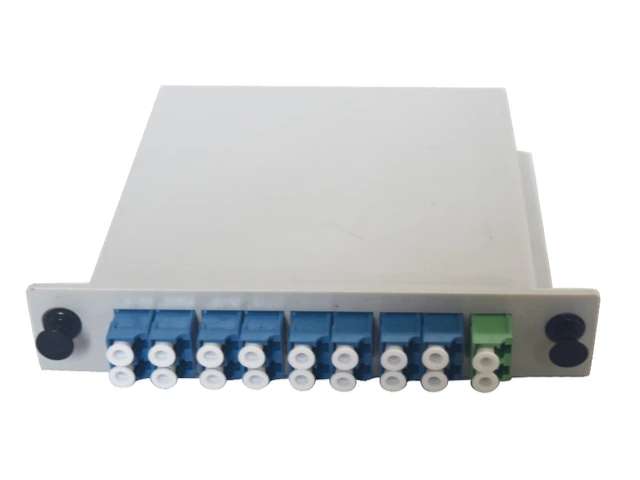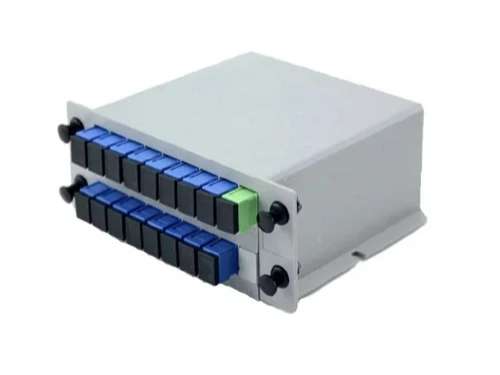Exploring the Benefits and Applications of LGX PLC Splitters

LGX PLC Splitters: An Overview
LGX PLC splitters, also known as fiber optic splitters or planar lightwave circuit splitters, play a crucial role in modern telecommunications networks. These devices are designed to split a single optical signal into multiple signals, allowing for efficient distribution of data across different network paths. By utilizing advanced technology, LGX PLC splitters ensure minimal signal loss and maintain the integrity of the transmitted data. With their compact size and high performance, these splitters have become an essential component in various network applications. In the following sections, we will delve deeper into the benefits and applications of LGX PLC splitters.
Enhancing Network Efficiency with LGX PLC Splitters
LGX PLC splitters play a vital role in enhancing network efficiency in telecommunications systems. One of the key ways they achieve this is through improved signal distribution. These splitters are designed to split a single optical signal into multiple signals, allowing for efficient transmission across different network paths. By evenly distributing the signal, LGX PLC splitters minimize signal loss and ensure that each branch receives an equal amount of data.
The benefits of improved signal distribution are significant for network efficiency. With LGX PLC splitters, telecommunications networks can achieve better load balancing, as the data traffic is evenly distributed among multiple paths. This helps prevent congestion and bottlenecks, resulting in smoother and more reliable network performance. Additionally, improved signal distribution reduces latency and improves overall network response time, enhancing the user experience.
In addition to signal distribution, LGX PLC splitters also contribute to enhanced network performance. These splitters are designed with high-quality components that minimize insertion loss and maintain signal integrity throughout the splitting process. As a result, the transmitted data remains intact and unaffected by the splitting operation. This ensures that networks can maintain optimal performance levels without compromising on data quality or speed.
By incorporating LGX PLC splitters into their networks, telecommunication providers can significantly improve their network efficiency. These devices enable better utilization of available bandwidth, reduce downtime due to congestion or bottlenecks, and enhance overall network capacity. The combination of improved signal distribution and enhanced network performance makes LGX PLC splitters an invaluable component in modern telecommunications infrastructure.

Versatile Applications of LGX PLC Splitters
LGX PLC splitters find wide-ranging applications in telecommunications networks due to their versatility and performance. These splitters are utilized in various scenarios to facilitate efficient signal distribution and network optimization.
In telecommunications networks, LGX PLC splitters are commonly used in fiber optic distribution frames (ODFs) and patch panels. They enable the splitting of optical signals from a single input into multiple outputs, allowing for seamless connectivity between different network components. This makes them ideal for applications such as fiber-to-the-home (FTTH), where multiple subscribers need to be connected to a central network hub.
The advantages of using LGX PLC splitters in telecommunications networks are manifold. Firstly, they provide excellent signal quality with minimal insertion loss, ensuring that the transmitted data remains intact throughout the splitting process. Secondly, these splitters offer high port density, allowing for efficient use of limited rack space in network installations. Additionally, LGX PLC splitters have low polarization-dependent loss (PDL) and wavelength-dependent loss (WDL), making them suitable for transmitting different wavelengths simultaneously.
When compared to other splitter options like fused biconic taper (FBT) splitters or micro-optical-electro-mechanical systems (MOEMS) splitters, LGX PLC splitters have unique features and benefits. Unlike FBT splitters that rely on fusion splicing techniques, LGX PLC splitters use planar lightwave circuit technology, which offers better performance and reliability. Moreover, LGX PLC splitters can handle higher split ratios and provide more uniform power splitting across all output ports.
In summary, the versatile applications of LGX PLC splitters make them an essential component in modern telecommunications networks. Their ability to efficiently distribute optical signals while maintaining signal quality sets them apart from other splitter options available in the market.
Selecting the Perfect LGX PLC Splitter for Your Network
Choosing the right LGX PLC splitter is crucial to ensure optimal performance and compatibility with your network. There are several factors to consider when making this decision.
One important factor to consider is the split ratio required for your network. The split ratio determines how many output ports are needed for a given input signal. It is essential to assess the number of subscribers or devices that need to be connected and choose a splitter with an appropriate split ratio to accommodate the desired connections.
Compatibility with your network infrastructure is another crucial consideration. You should evaluate whether the LGX PLC splitter supports the necessary fiber optic connectors, such as SC, LC, or FC connectors, used in your network. Additionally, it is important to check if the splitter operates at the correct wavelength range compatible with your network's transmission specifications.
The configuration of the LGX PLC splitter also plays a significant role in its suitability for specific networks. Different configurations, such as 1x2, 1x4, or 1x8 splitters, offer varying levels of splitting capabilities. Assessing your network's requirements and understanding which configuration best suits your needs is essential for optimal performance.
Selecting the appropriate configuration ensures efficient signal distribution and minimizes power loss across all output ports. It allows you to achieve balanced power levels among different branches of your network, ensuring reliable connectivity and preventing signal degradation.
In summary, when selecting an LGX PLC splitter for your network, it is crucial to consider factors such as split ratio requirements, compatibility with existing infrastructure, and choosing the right configuration. By carefully evaluating these factors, you can ensure that you select a perfect LGX PLC splitter that meets the specific needs of your network.

Ensuring Smooth Installation and Maintenance of LGX PLC Splitters
Proper installation and maintenance are essential for the smooth operation and longevity of LGX PLC splitters. By following best practices, you can ensure optimal performance and minimize potential issues.
During installation, it is crucial to handle the LGX PLC splitter with care. Avoid excessive bending or twisting of fiber optic cables to prevent signal loss or damage. Ensure that all connections are securely tightened to maintain a stable connection. It is also recommended to clean the connectors before installation to remove any dust or debris that could affect signal quality.
Common challenges during installation include misalignment of fibers, improper connector termination, and incorrect positioning of the splitter within the network infrastructure. To overcome these challenges, it is important to carefully follow manufacturer guidelines and consult with experts if needed. Conducting thorough testing after installation can help identify any issues early on and ensure proper functionality.
Maintenance of LGX PLC splitters involves periodic inspection and cleaning. Regularly check for any signs of physical damage or loose connections. Clean the connectors using appropriate cleaning tools and techniques to remove dirt or contaminants that may accumulate over time.
Troubleshooting LGX PLC splitters requires a systematic approach. Start by checking all connections for tightness and proper alignment. Use optical power meters or other testing equipment to measure signal strength at different points in the network. If issues persist, consult with professionals or contact the manufacturer for further assistance.
To ensure optimal performance and longevity of LGX PLC splitters, it is important to adhere to recommended maintenance schedules provided by the manufacturer. Regular inspections, cleaning, and prompt resolution of any identified issues will help maximize the lifespan of these devices while maintaining their efficiency in signal distribution.
The Future of LGX PLC Splitters
The future of LGX PLC splitters looks promising, with potential advancements and continued growth in their applications. As telecommunication networks evolve and demand for high-speed data transmission increases, the need for efficient signal distribution becomes even more critical. LGX PLC splitters are well-positioned to meet these demands.
Advancements in technology will likely lead to improved performance and higher split ratios for LGX PLC splitters. This means that networks can handle larger volumes of data traffic while maintaining optimal signal quality. Additionally, ongoing research and development efforts aim to enhance the compactness and cost-effectiveness of these splitters, making them even more attractive for network deployments.
Adopting LGX PLC splitters offers several advantages for your network. They enable efficient utilization of available bandwidth, improve network efficiency, and provide reliable connectivity to multiple subscribers or devices. With their versatility and compatibility with various fiber optic connectors, LGX PLC splitters offer flexibility in network design and scalability.
In conclusion, LGX PLC splitters have a bright future ahead as they continue to play a crucial role in telecommunications networks. Their ability to enhance signal distribution, improve network efficiency, and adapt to evolving network requirements makes them an indispensable component in modern infrastructure.
See Also
Exploring the Pros and Cons of PLC Blockless Splitters in Fiber Optic Networks
Demystifying ONU: A Comprehensive Overview of Types and Functions
Choosing the Best Fiber Optic Splitters: The ABS PLC Advantage
The Future of Fiber Optic: Unveiling the Power of Invisible Fiber Cable
Fiber Optic: 7 Benefícios da Solução FTTX com Splitters Ópticos PLC
About US
Follow Us
AnetFiber company's main products are indoor and outdoor optical fiber cables, outdoor waterproof pre-connected fiber-to-the-home products, PLC optical fiber splitters, optical fiber jumpers and pigtails, MTP®/MPO high-density big data product solutions, optical fiber field quick connectors and research and development molding, injection molding and production of optical fiber distribution boxes, optical fiber chassis cabinets, the market has expanded to the world, Europe, America, Asia, the Middle East and Latin America.
Address
Shenzhen City, Baoan District, Yanluo Street, Tangxiayong Community, Yangyong Industrial Road, Tonggangda New Energy Vehicle Park 406
Contacts
+86 199 2655 3586

